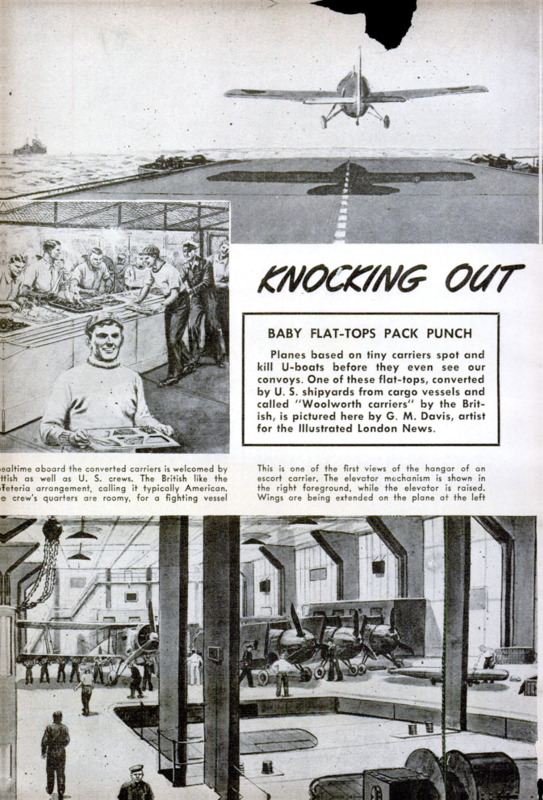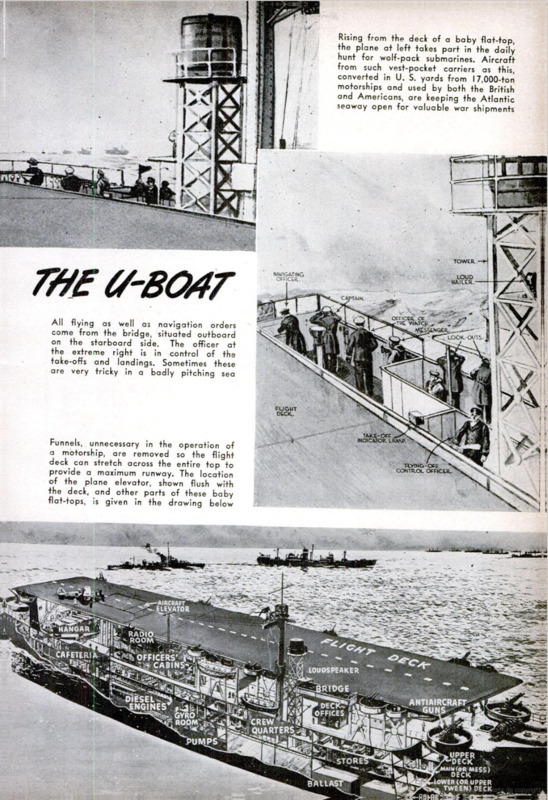Knocking Out the U-boat
Item
-
Title (Dublin Core)
-
Knocking Out the U-boat
-
Article Title and/or Image Caption (Dublin Core)
-
Knocking Out the U-boat
-
extracted text (Extract Text)
-
sealtime cboard the converted carriers is welcomed by
itish as well as U. S. crews. The British like the
Weteria arrangement, calling it typically American.
© crew's quarters are roomy, for a fighting vessel
This is one of the first views of the hangar of an
escort carrier. The elevator mechanism is shown in
the right foreground, while the elevator is raised.
Wings are being extended on the plane at the left
Rising from the deck of a baby flat-top,
the plane af loft takes part in the daily
hunt for wolf-pack submarines. Aircraft
from such vest-pocket carriers as this,
converted in U.S. yards from 17,000-ton
motorships and used by both the British
and Americans, are keeping the Atlantic
seaway open for valuable war shipments
All flying as well as navigation orders
come from the bridge, situated outboard
on the starboard side. The officer af
the extreme right is in control of the
take-offs and landings. Sometimes these
are very tricky in a badly pitching soa
Funnels, unnecessary in the operation of
a motorship, are removed so the flight
deck can stretch across the entire top to
provide a maximum runway. The location
of the plane elevator, shown flush with
the deck, and other parts of these baby
flat-tops, is given in the drawing below
-
Contributor (Dublin Core)
-
G. M. Davis (illustrator)
-
Language (Dublin Core)
-
eng
-
Date Issued (Dublin Core)
-
1943-11
-
pages (Bibliographic Ontology)
-
54-56
-
Rights (Dublin Core)
-
Public Domain (Google digitized)
-
Archived by (Dublin Core)
-
Matteo Ridolfi
-
Alberto Bordignon (Supervisor)
 Popular Science Monthly, vol. 143, n. 5, 1943
Popular Science Monthly, vol. 143, n. 5, 1943




